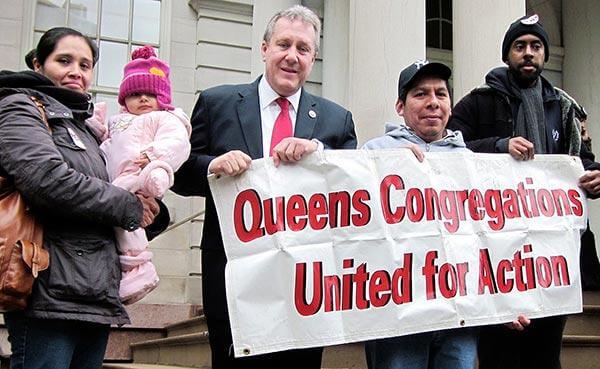By Rebecca Henely
Corona-area legislators and civic activists are urging the city Department of Education to shorten the time line from 10 years to two for removing light fixtures with toxic polychlorinated biphenyls in public schools, but the DOE said the decade-long plan is the best it can do given the complexity of the work.
“It’s a very important issue because PCBs have been proven to cause cancer,” said City Councilman Daniel Dromm (D-Jackson Heights).
The DOE announced in February plans to remove and replace all light fixtures with PCBs in the city’s 772 public schools within the next 10 years. DOE Deputy Chancellor Kathleen Grimm said in testimony presented earlier this month to the Council Committees on Education and Environmental Protection that the plan would cost $850 million and would also include upgrades to boilers throughout the schools.
“The unprecedented scope of this plan cannot be understated — no other city in the United States has attempted to do anything near this scale,” Grimm said in her testimony.
Yet some say it does not go far enough. The U.S. Environmental Protection Agency has recommended the PCBs be removed within five years, and civic activists have said two is more appropriate. The Corona-based Queens Congregations United for Action, which got involved with the issue through a partnership with Brooklyn’s New York Communities for Change, held a meeting last week to inform parents of the dangers of PCBs at PS 61, at 98-50 50th Ave. in Corona.
“Even low levels can cause long-term problems in [students] learning or even cancer in a worst-case scenario,” said Jamie Weisberg of QCUA.
Dromm and Councilwoman Julissa Ferreras (D-East Elmhurst) have both pushed for a quicker time line. The legislators rallied outside City Hall last week with QCUA, NYCC and New York Lawyers for the Public Interest last week.
“We must do what is necessary to remove PCB contamination from our schools in a timely fashion, so as not to create a full-blown public health problem,” Ferreras said in a statement.
Dromm said he and Ferreras were concerned not because schools in their area showed high levels of PCBs in the air, but the students in the district could choose to go to high schools that do have high levels.
Yet Grimm said in her testimony she believed the 10 years was necessary, given the scope of the audits and retrofits needed to find and replace the PCBs. She also said most of the work would have to be done on weekend or on holidays when school is not in session, especially as the PCBs may be coupled with asbestos containment, which follows specific protocols that prohibit removal from being done in the evenings.
“We believe that EPA is severely underestimating the complexity of performing work of this type in school buildings — processes in which we are uniquely experienced,” Grimm said in her testimony.
Dromm said he believed the department should defer to the EPA.
“If they say it needs to be removed within five years, that’s what [the DOE] should be doing,” he said.
Reach reporter Rebecca Henely by e-mail at rhenely@cnglocal.com or by phone at 718-260-4564.




































